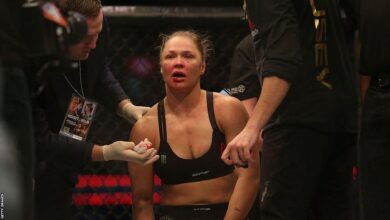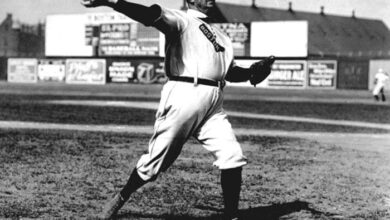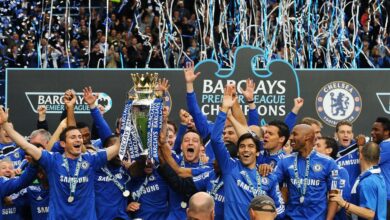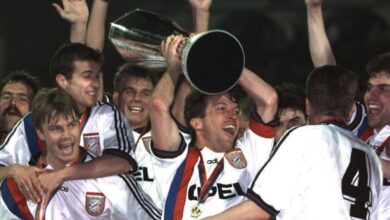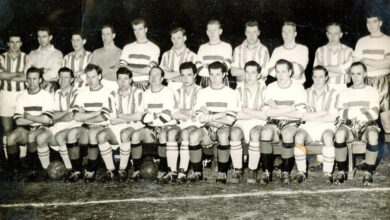FC Bayern: The golden years (1966 to 1979)
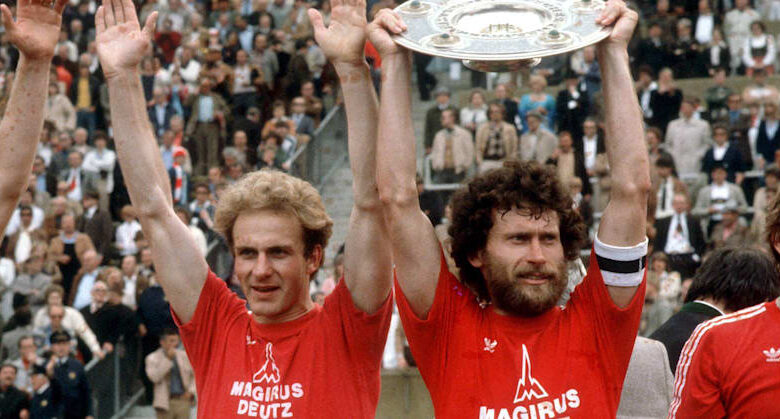
In FC Bayern’s promotion year (1964/65), a trio took to the stage who would become influential players for the Bundesliga newcomers. Goalkeeper Sepp Maier and sweeper Franz Beckenbauer came through the club’s own academy, while young striker Gerd Müller joined from TSV Nördlingen. Each of them would become one of the best in the world in their position and form Bayern’s “golden axis”. Supported by teammates such as battling captain Werner Olk, the athletic Franz “Bulle” Roth and the tireless Hans-Georg “Katsche” Schwarzenbeck, they conquered both domestic and continental football.
A successful campaign in the club’s first Bundesliga season in 1965/66 yielded a third-place finish and the DFB Cup trophy. A year later the Munich club won the European Cup Winners’ Cup, beating Glasgow Rangers 1-0 in the 1967 final to claim the club’s first continental honour. The longed-for league title finally arrived in 1969 when stern disciplinarian Branko Zebec made cool tacticians out of Cik Cajkovski’s attack-minded footballing romantics. An additional DFB Cup win also marked the club’s first double in their history.
The next important step for Bayern, who had been coached by Udo Lattek since 1970, came with the move from the Grünwalder Stadion to the new Olympiastadion. The club contested their first game at their new home on 28 June 1972, beating Schalke 5-1 to celebrate their third league title and a record income of 1.2 million Deutschmarks. It was the foundation for the great sporting and economical success to come for FC Bayern. Gerd Müller also scored 40 goals that Bundesliga season – a record likely to never be broken.
Kings of Europe
Two further titles followed in 1973 and 1974, as well as the first European Cup in 1974 with a dramatic final against Atletico Madrid in Brussels. Schwarzenbeck scored the equaliser to make it 1-1 just a minute before the end of extra-time to take the game into a replay, which Beckenbauer & Co. won 4-0 thanks to braces apiece from Uli Hoeneß and Gerd Müller.
That same year, Germany won the World Cup, beating the Netherlands in the final in Munich. Six Bayern players were in the starting eleven for the 2-1 win (Maier, Franz Beckenbauer, Schwarzenbeck, Paul Breitner, Hoeneß and Müller) with two getting on the scoresheet. Breitner netted with a penalty and Müller an unforgettable shot on the turn.
And while Bayern took a break from winning the Bundesliga, they clocked up a treble on the European stage. They made it a hat-trick of successive European Cups by beating Leeds United 2-0 in Paris with goals from Roth and Müller in 1975 and St. Etienne 1-0 in Glasgow (Roth scored again) in 1976, both under coach Dettmar Cramer. In 1976 they also won the Intercontinental Cup (0-0 and 2-0 against Cruzeiro). They were last major titles of the century for FC Bayern…
Years of change followed, years without a trophy. In 1977 Franz Beckenbauer left FC Bayern to join New York Cosmos in the North American Soccer League. Just 12 months later he was followed across the Atlantic by Gerd Müller as the striker headed to the Fort Lauderdale Strikers.
Start of the Hoeneß era
In 1979 Uli Hoeneß, at the age of 27, was appointed the club’s general manager. When Hoeneß swapped the pitch for an office desk at Säbener Straße, FC Bayern were burdened with a debt of 7 million Deutschmarks (€3.6m). The annual turnover was about 12 million Deutschmarks (€6.1m). However, things quickly turned around. Pal Csernai succeeded Gyula Lorant as coach in March 1979 to also begin a sporting renaissance on the pitch.

